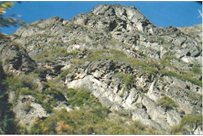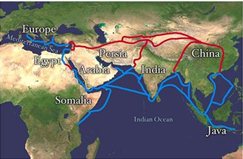Opening up China
SurroundedWith the Pacific Ocean to its east, rainforests in the south, the world’s highest mountains in the south-west, and deserts bordering the north and north-west China was virtually cut off from the ancient world. Natural barriers, like Tian Shan (or the Celestial Mountains) on the western frontier meant that China developed in isolation for thousands of years.
The Celestial Mountains ©DEC Some people however, did manage to find a way through these physical barriers. Desert peoples from the north threatened China’s borders with invasion for centuries. Clashes with these nomadic tribes led to what would become arguably the greatest construction project the world has ever seen. Something that snakes its way across China and can be seen from outer space (but not the Moon). Do you know what it is?
|
The Silk RoadOne other group of people managed to penetrate the rugged environments, this time on China’s western edges. First led by an envoy of the Han dynasty called Zhang Qian, traders forged a route between China and Europe called the Silk Road. Silk was a precious fabric made more valuable because the Chinese were the only people who knew how to make it in ancient times. But silk was not the only product traded. China imported peaches, jade, cotton, pepper, horses and many other items. Buddhism came from India and became a major religion in China. In return, Europe, the Middle East and Africa first saw paper, gunpowder and the compass from China.
|



